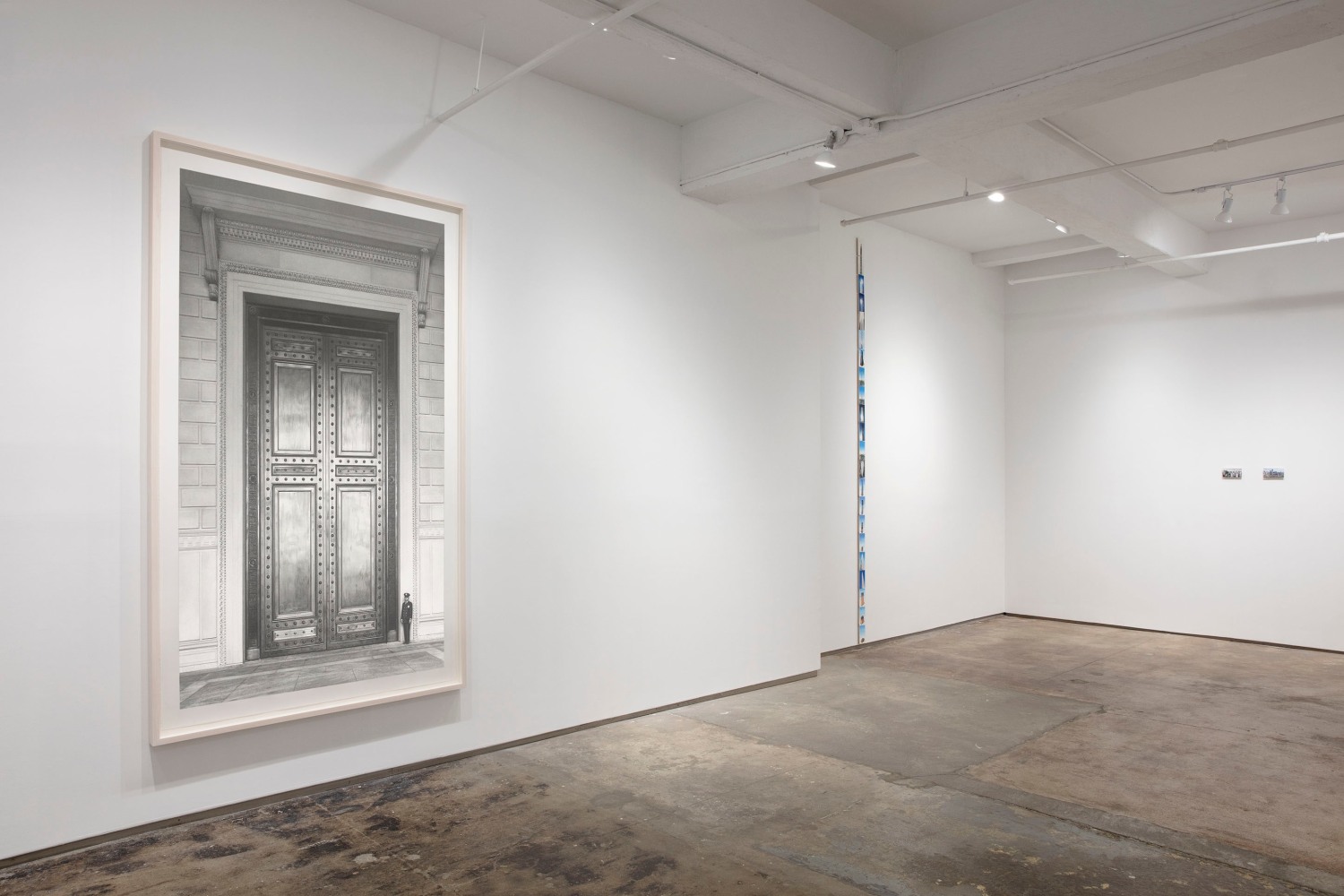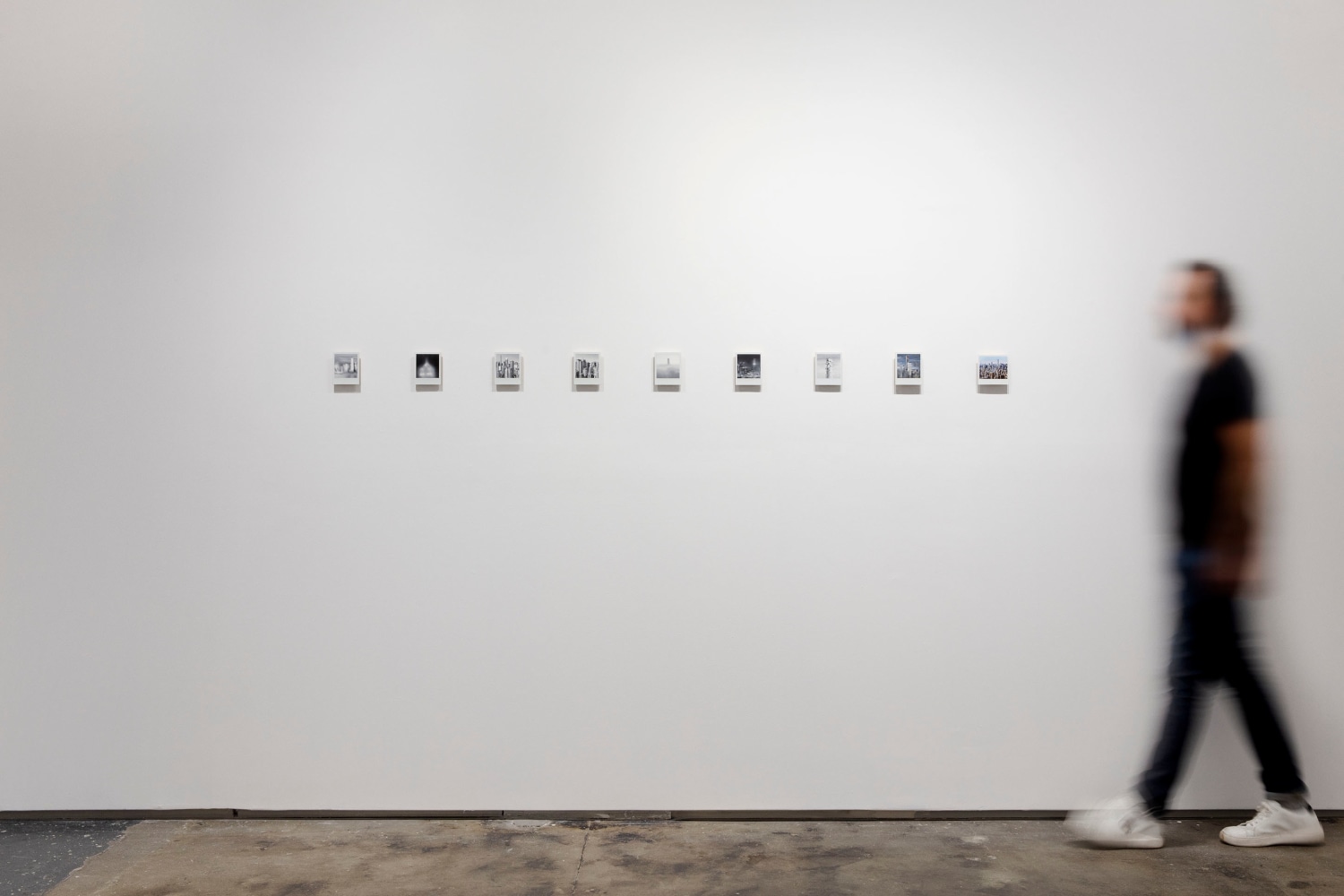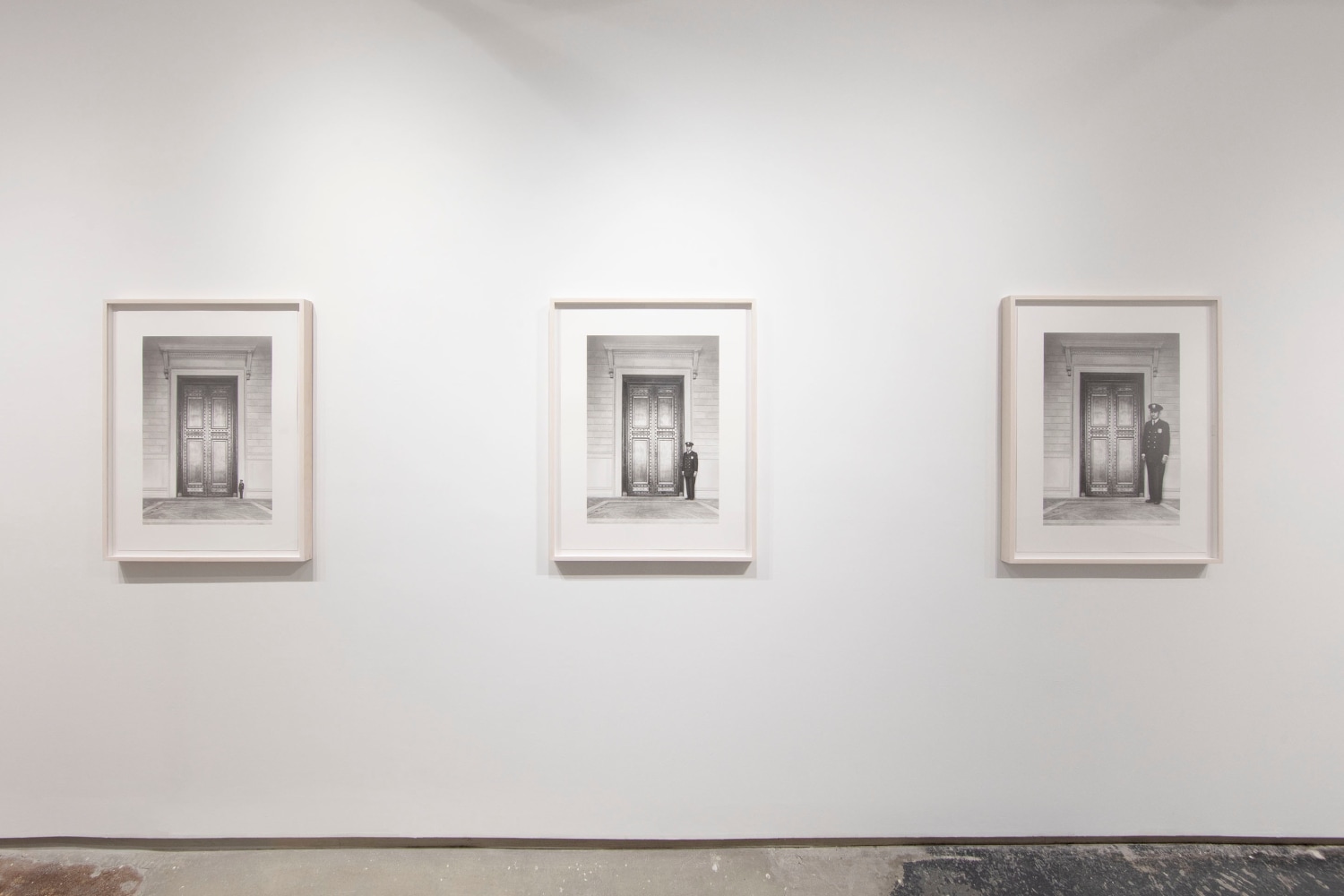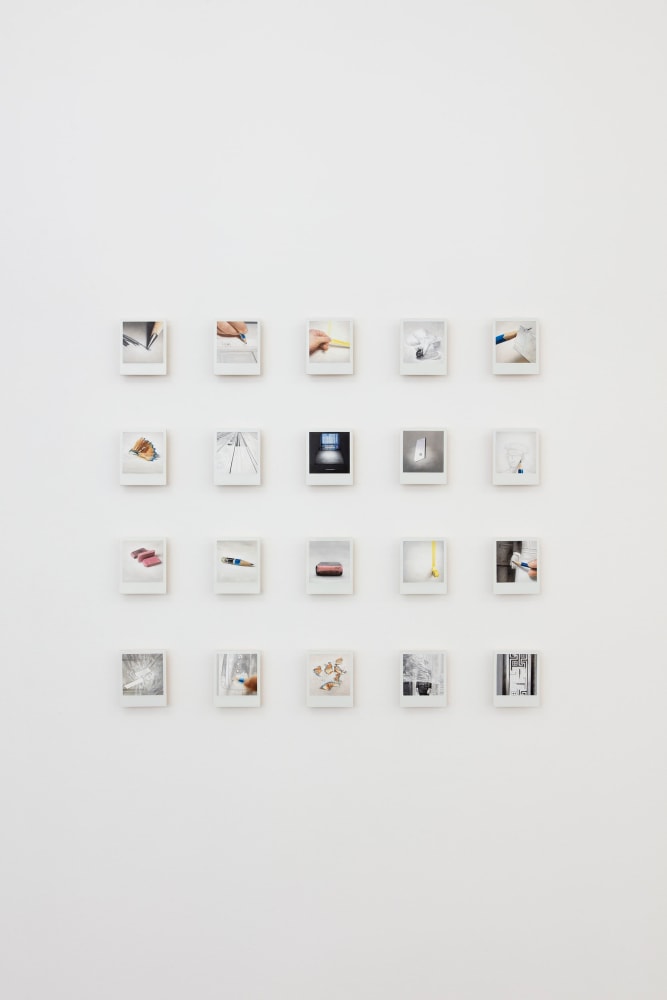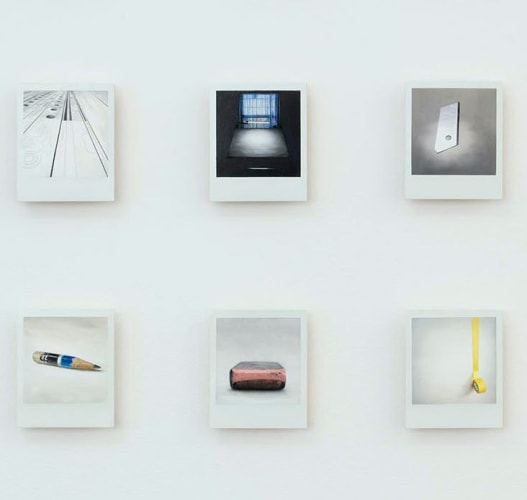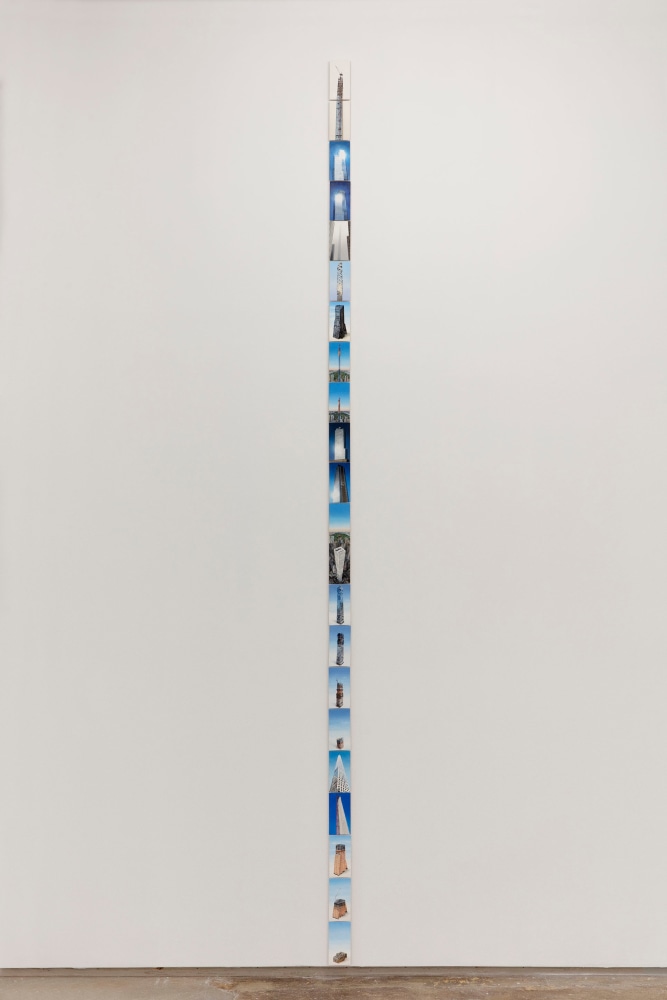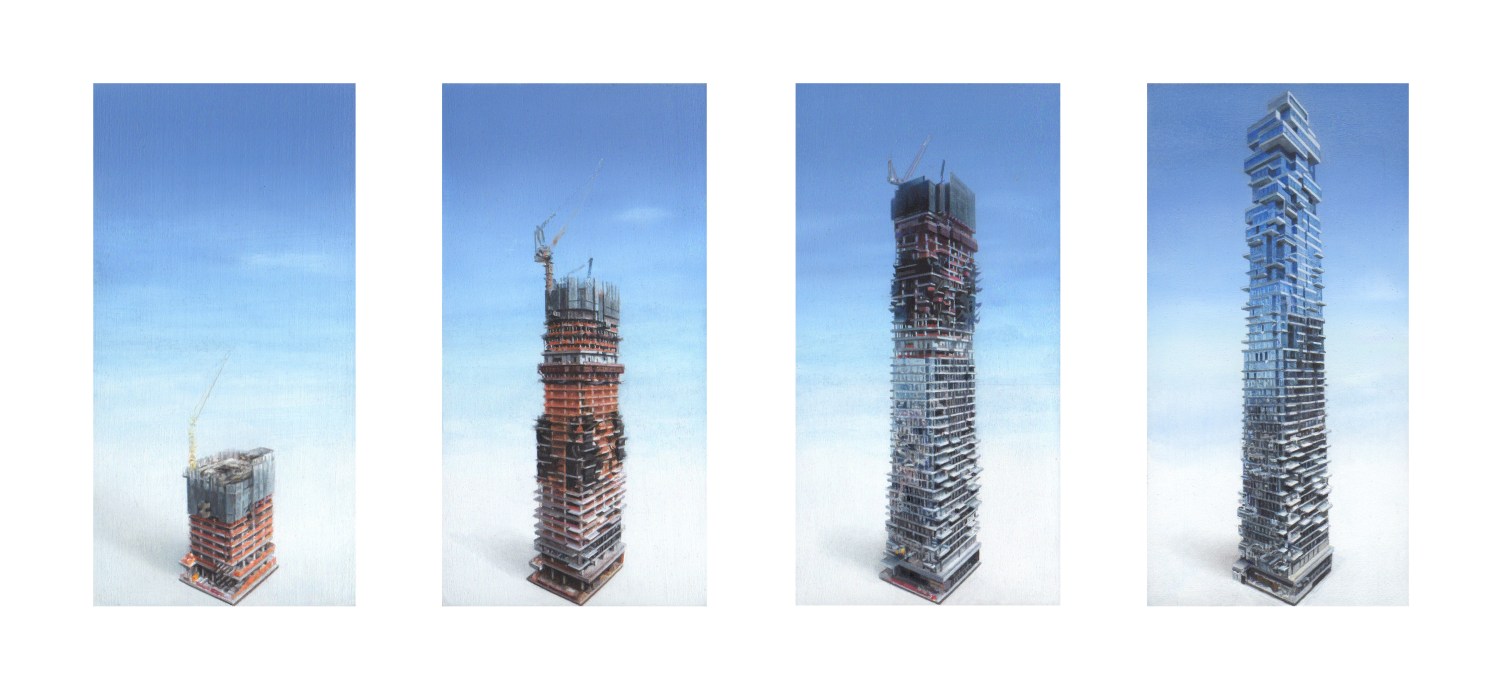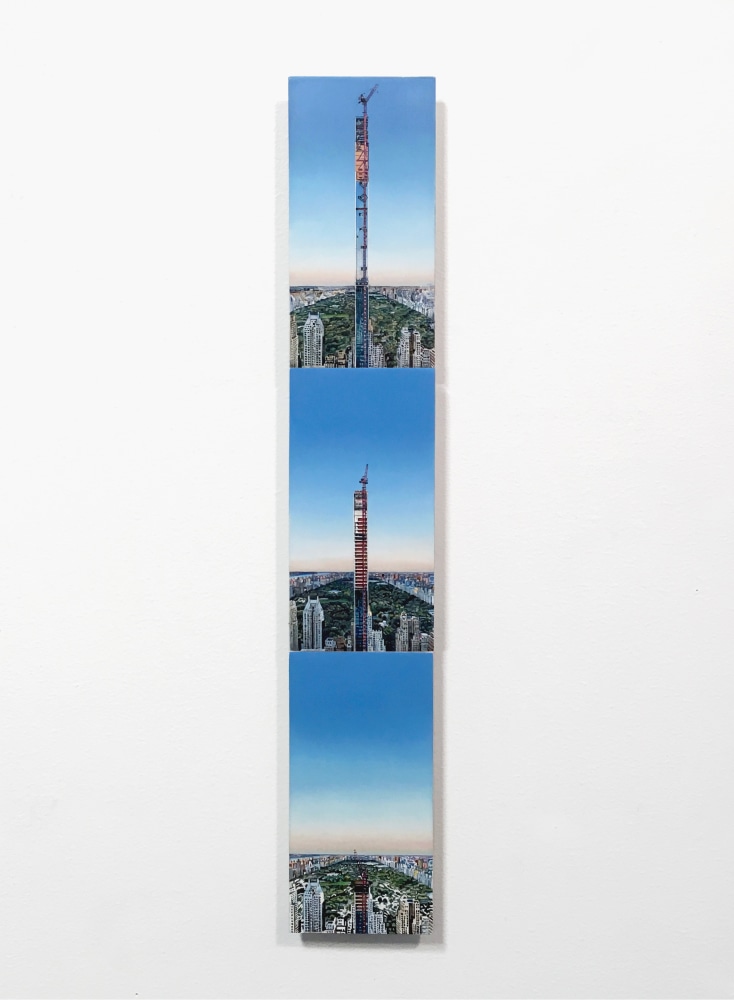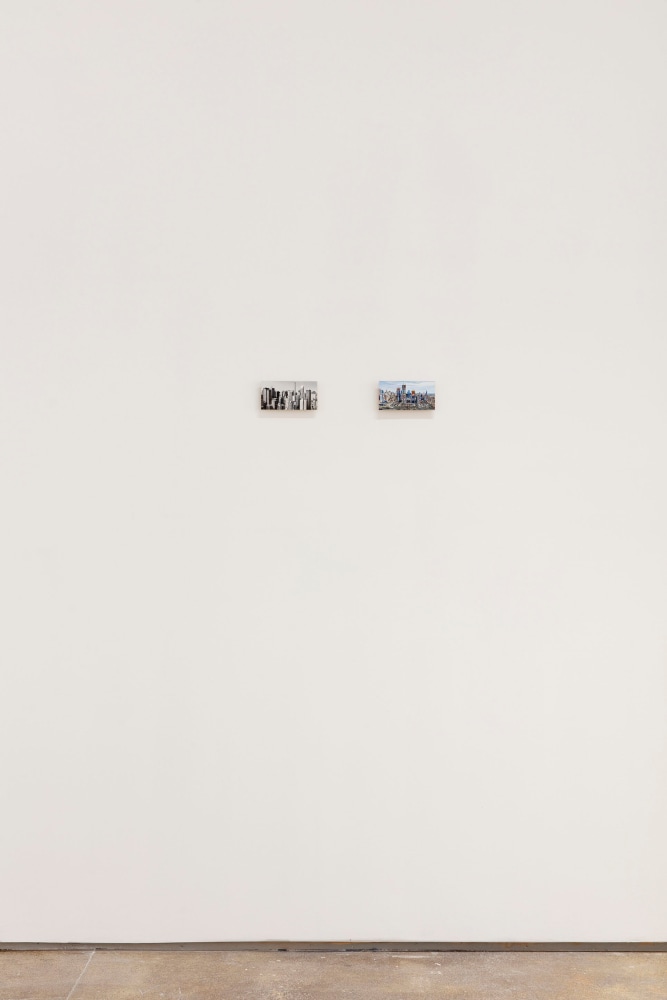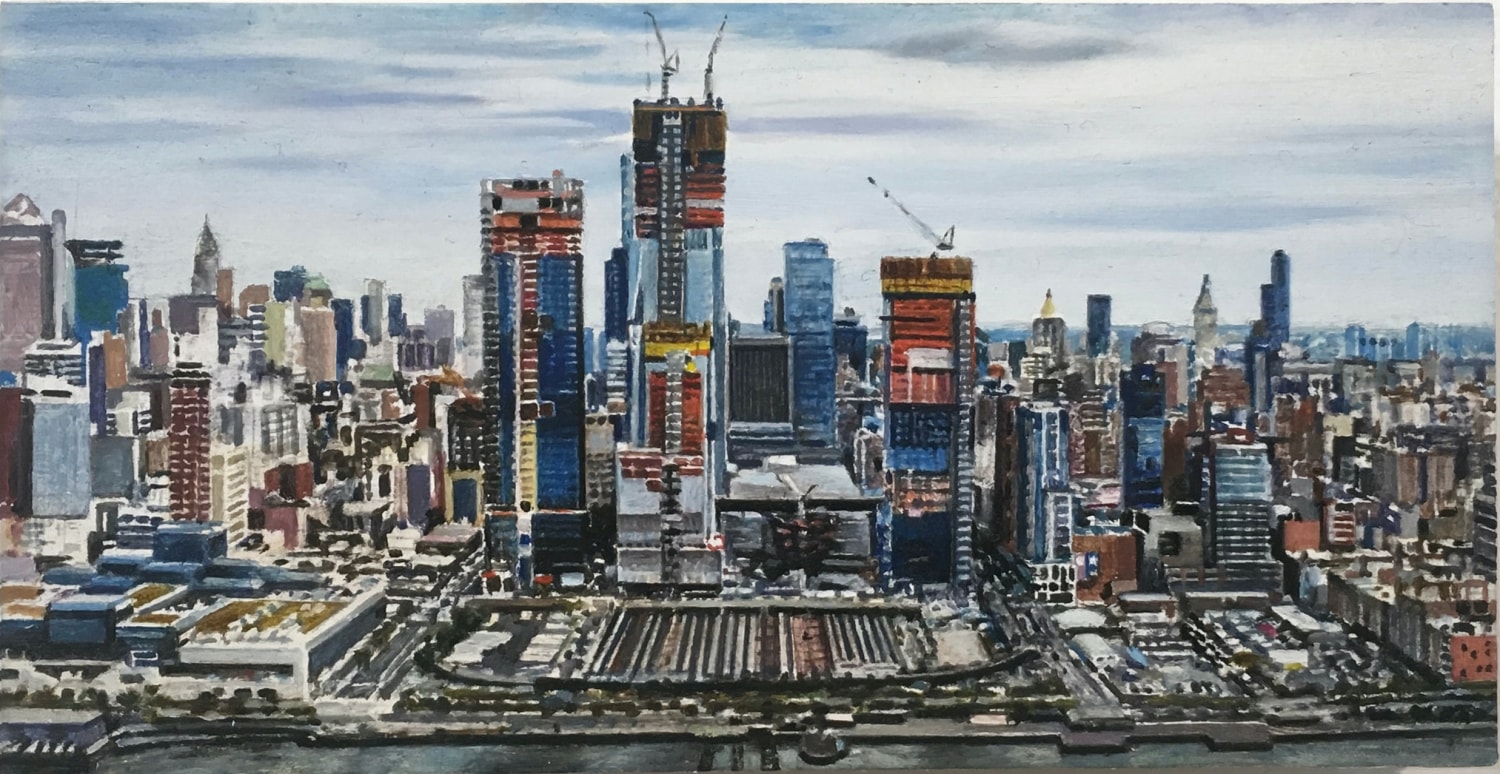The gallery is pleased to present They Might be Giants, an exhibition of new works by Spanish born, American artist Marti Cormand. Through large scale pencil on paper drawings and a group of small scale oil paintings, Cormand reflects on the architectures of power with an extraordinary attention to detail. The exhibition will be on view from September 10 to October 3, the works will then travel to the Aldrich Contemporary Art Museum for Twenty Twenty (featuring Oasa DuVerney, Judith Eisler, Andy Mister, William Powhida, Gil Scullion and Diana Shpungin), from October 12, 2020 through March 14, 2021.
"Invited to participate in an exhibition about the upcoming US election, I was inspired to visit the National Archives in Washington DC where the US Constitution, the Declaration of Independence and the Bill of Rights are housed. Walking up the grand staircase on Constitution Avenue, I fixated on the buildings monumental bronze doors – 38 feet high and over 6 tons. A 1936 photograph of the door showing the relationship in scale between the guard and the door is the subject of my recent work ‘They Might Be Giants’. The title is a reference to Cervantes’ Don Quixote, who believes that the windmills in the distance are ‘hulking giants’ and mistakes their blades for ‘long arms’. Feeling threatened by his delusion, he declares his intention to kill them.”
Completed in 1935 by architect John Russell Pope, the National Archives building was designed in the Neoclassical style at a time when most architects were embracing Modernism. Pope’s monument to US history stands in stark contrast, for instance, to Mies van der Rohe’s 1929 Barcelona Pavilion. Criticized and isolated by his peers, Pope was mocked with the nickname “Last of the Romans”. Pope, like other proponents of neoclassical architecture, believed that visual reminders of the Roman Empire connoted power. Earlier this year, a draft executive order named ‘Making Federal Buildings Beautiful Again’ was issued by the White House, it mandated that ‘classical architectural style shall be the preferred and default style’ for all future federal buildings in the US.
With Vanishing New York, a series of oil paintings on Polaroid photographs and wooden panels the artist offers a counterpoint -intimate in scale and process- to the massive black and white drawings. During the year preceding lockdown, taking long walks around the city with his smartphone, Cormand has been documenting some of the dramatic changes to New York City skyline. In the past decade, the city has known an unprecedented construction boom, generating a sense of dislocation and unreality abruptly interrupted by the Covid 19 pandemic.
An epilog to the show, Archive Building is a grid of twenty-four oil paintings on Polaroid paper. The title refers again to the National Archive building, as well as to the act of documenting the making of the large pencil drawing They Might be Giants, building an archive of its creation step by step. “Although the documentation of an artwork is usually photographic, I have rendered it in intimate oil paintings by highlighting the tools I used to draw and by showing the process of building up the image. While Polaroid pioneered the instant camera, I have used its film not to register an image via exposure but as a blank surface to paint on. I have always equated Polaroids with time made visible – the time it takes for the image to slowly appear.” (Marti Cormand)
Born in Barcelona in 1970, Martí Cormand lives and works in Brooklyn. Selected exhibitions include: Twenty Twenty, curated by Richard Klein, Aldrich Contemporary Art Museum, Ridgefield, CT (upcoming); Un elefante en El Prado, Espacio Minimo, Madrid (2019); Formalizing their concept: After Levine, After Evans, Josee Bienvenu Gallery, NY (2018); Walk the Distance and Slow Down: Selections from the Collection of JoAnn Gonzalez Hickey, Boulder Museum of Contemporary Art, Boulder, CO (2017); Postcards to AZ, Josée Bienvenu Gallery, NY (2016); Martí Cormand, Galería Cayón, Madrid (2014); Formalizing their concept, Galería Casado Santapau, Madrid, (2014); Formalizing their concept, Josée Bienvenu Gallery, NY (2013); False Documents and Other Illustrations, Portland Museum of Art, Portland, ME (2010 - 2011); Martí Cormand: Aldrich Emerging Artist Award Show, Aldrich Contemporary Art Museum, Ridgefield, CT (2007). Public collections include: Museum of Modern Art, New York; Museo Reina Sofia, Madrid; Dallas Museum of Art, TX.
*The gallery is open from 12 to 6pm Tuesday through Saturday and by appointment.

